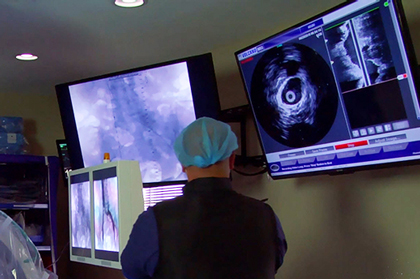Complex angioplasties require not only experience and patience but also technology. Imaging–guided pre-dilation, stent sizing, and post-dilation reduced the cardiovascular events after a 3-year follow-up in patients who received drug-eluting stents in complex angioplasties.

This paper, recently published in JACC Interventions, compared the 3-year outcome of the complex angioplasty optimization technique with intravascular imaging to “customize” every step of the procedure.
Researchers evaluated 9,525 patients from the IRIS-DES (Interventional Cardiology Research In-cooperation Society-Drug-Eluting Stents) registry who underwent angioplasty in the left main coronary artery, bifurcation lesions, long or diffuse (>30mm) lesions, or severe calcification. Intravascular ultrasound (IVUS) was used in 89.5% of patients (n = 8522).
IVUS was conducted in every step of the procedure (pre-dilation, stent sizing, and post-dilation) for just over a third of patients (35.4%) This subgroup was defined as the optimized complex angioplasty arm.
Read also: IVUS in Unprotected LMCA Angioplasty: Should We Change the Way We Use It?
After 3 years of follow-up, those who underwent optimized angioplasty had a significantly lower risk of suffering adverse events (5.6% vs. 7.9%; hazard ratio [HR]: 0.71; 95% confidence interval [CI]: 0.63 to 0.81; p < 0.001).
This difference was significant, even when IVUS was used in the rest of the population in at least one step of the procedure.
These results confirm data from the ULTIMATE and the IVUS-XPL.
Conclusion
Patients who undergo complex coronary angioplasty where IVUS is performed in every step of the procedure experience fewer adverse events after 3-years of follow-up. All-step optimization should be actively applied in routine practice.
Original Title: Optimal Stenting Technique for Complex Coronary Lesions. Intracoronary Imaging-Guided Pre-Dilation, Stent Sizing, and Post-Dilation.
Reference: Hanbit Park et al. J Am Coll Cardiol Intv 2020;13:1403–13. https://doi.org/10.1016/j.jcin.2020.03.023.
Get the latest scientific articles on interventional cardiologySubscribe to our weekly newsletter
We are interested in your opinion. Please, leave your comments, thoughts, questions, etc., below. They will be most welcome.





